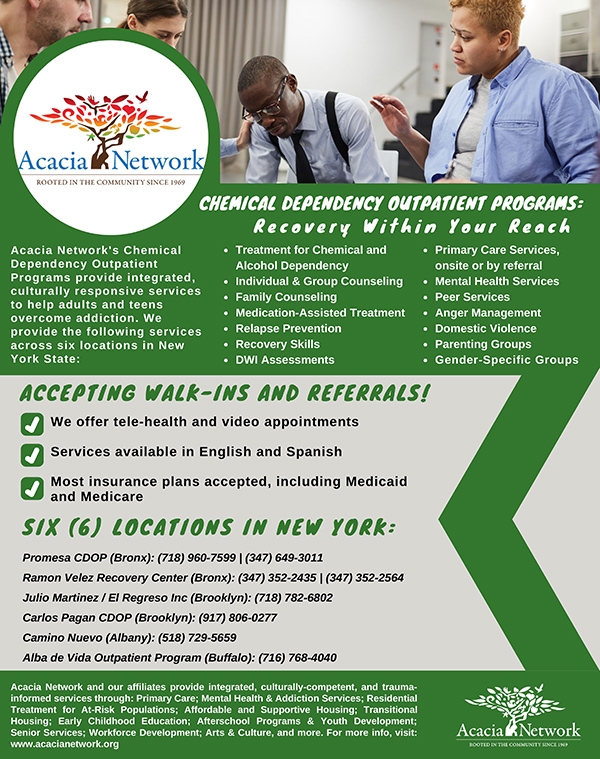2020 was a year to remember. Not only did the United States –and the world– grapple with a pandemic of epic proportions, but our country was also forced to take a deeper, harder look at the pervasive and deadly impact of racial inequality and systemic discrimination, as the continued violence against Black Americans by police officers made the headlines time and time again. The murder of George Floyd was the last straw.

Lymaris Albors
What 2020 also uncovered were the deep divides between those who have and those who have not: those who have access to steady income, stable housing, affordable health insurance, nutritious food, reliable technology, and otherwise dependable support networks, fare better, while those who do not have access to these lifelines are more susceptible to COVID-19 infection and mortality.
These divides were most evident in cities across America where racial and socio-economic segregation seem to be built into the urban fabric, such as New York City. The Bronx, home to some of the poorest Congressional Districts in the nation, consistently suffered the highest rates of infection and mortality throughout the COVID-19 pandemic (NYC Department of Health and Mental Hygiene, n.d.). In fact, all around the country, communities largely comprised of Black/African American and Hispanic/Latinx populations were disproportionately impacted by COVID-19.
What is the connection between race, poverty, and health? Why have we seen such stark differences among racial/ethnic groups when it comes to COVID-19 illness and likelihood of survival?
Trauma in the Underserved Communities
While the answer to the question above is multifactorial, it is necessary to take into account the incidence rate of Adverse Childhood Experiences (ACEs) among vulnerable populations, as well as the impact of critical social determinants of health.
The Centers for Disease Control and Prevention (CDC) describe Adverse Childhood Experiences (ACEs) as potentially traumatic events that occur during childhood, such as experiencing violence, abuse, or neglect, or witnessing violence in the home or community, among other experiences (CDC, n.d.). Environmental factors also contribute to a young person’s sense of safety and stability, or lack thereof. For example, was the child exposed to substance use, alcoholism, and addiction within the household? Did any household members suffer from mental illness? Were there any other factors that contributed to ongoing instability and toxic stress, such as incarceration, homelessness, or poverty?
Community risk factors that contribute to the development of ACEs include growing up in neighborhoods with high rates of violence and crime, high rates of poverty and housing insecurity, limited educational and workforce development opportunities, easy access to drugs and alcohol, few community activities for young people and/or lack of afterschool supports, among other social and environmental challenges.
ACEs can cause long-term consequences that reduce the quality-of-life for an individual, such as chronic physical and/or behavioral health conditions, substance use disorders, unemployment, loss of income, among other challenges. Meanwhile, factors associated with urban poverty have been shown to increase the risk that trauma will negatively impact family functioning (Collins, 2010).
This ripple effect is evident in communities of color across the South Bronx, which have been historically underfunded, under-resourced, and underrepresented. The barriers of structural inequality have not only led to chronic health, education, and socio-economic disparities while contributing to high incidences of mental health and substance use disorders, but they have also bred generational trauma.
While the public sector plays a key role in addressing these systemic challenges, nonprofit human services organizations are expected to fill the gaps, which are oftentimes enormous. Nonprofits like the one in which I run the operations – Acacia Network – play a key role in ensuring that vulnerable communities have access to the resources they need to overcome the barriers preventing them from leading healthy, successful lives.
In order to make transformative and lasting change, organizations must commit to adopting a trauma-informed model from the very top at the CEO level, to every single staff person in the frontlines: from social workers and primary care providers, to front desk personnel and security guards.
What is Trauma-Informed Care?
The American Psychological Association defines trauma as “any disturbing experience that results in significant fear, helplessness, dissociation, confusion, or other disruptive feelings intense enough to have a long-lasting negative effect on a person’s attitudes, behavior, and other aspects of functioning.” (APA Dictionary, n.d.).
Trauma can affect anyone regardless of who they are or where they come from. Some people experience very few traumatic situations throughout their lifetime, while others may experience chronic or multiple traumatic events. Research tells us that for people experiencing homelessness and poverty, the rates of trauma are extraordinarily high.
According to the Substance Abuse and Mental Health Services Administration, “a trauma-informed approach […] includes an understanding of trauma and an awareness of the impact it can have across settings, services, and populations. It involves viewing trauma through an ecological and cultural lens and recognizing that context plays a significant role in how individuals perceive and process traumatic events” (SAMHSA, 2014).
Organizations like Acacia Network, which are deeply embedded in vulnerable communities, must take into account the existence of prior and ongoing trauma when working with their clients. Experts argue that it is important to recognize the possible existence of a traumatic history in order to establish therapeutic environments that are physically and psychologically safe for the individuals served (Levenson, 2017).
Acknowledging trauma requires providers to take the necessary steps to promote the physical and emotional wellbeing of their clients, including the following:
- Ensuring that all spaces are welcoming, orderly, and have participants’ rights visibly posted;
- Keeping participants informed about all aspects of their treatment so they feel involved in the decision-making processes regarding their care and gain a sense of empowerment;
- Adopting treatment interventions and designing care plans that are culturally responsive and take into account each participant’s background.
Communities of color that have been systematically abused by the structures of power experience higher rates of hesitancy and mistrust when seeking care. More recently, we’ve seen this play out with COVID-19 vaccine hesitancy among Black/African American and Hispanic/Latinx communities. Culturally competent care plans are therefore critical when serving racial/ethnic minorities, as studies have shown that patients feel higher levels of trust when providers share their racial/ethnic background.
The Importance of Adopting a Trauma-Informed Model at the CEO Table
I have been in the primary care, behavioral health, and human services fields for over 20 years. Over the past two decades, I have witnessed firsthand the undeniable impact that adopting a trauma-informed lens can have on the way providers and practitioners approach their work, and how clients engage in their recovery processes.
In my early career, I was given the opportunity to develop and lead trauma-informed trainings for community outreach workers. Fast forward a few years, and I was running the day-to-day operations of a federally qualified health center that served women and children, where I was able to put into practice what I had been training community outreach workers to do. Until then, I had considered myself an expert in the whys and how you should adopt a trauma-informed model, but I hadn’t had the opportunity to witness the true power of this approach.
Today, I have the honor of serving as the Chief Operating Officer at Acacia Network, one of the largest Latino-led nonprofits in the nation, serving more than 150,000 individuals annually through integrated, trauma-informed services in the areas of health, housing, economic development, social services, and cultural revitalization. Among other resources, we provide comprehensive and culturally responsive behavioral health and addiction services to youth and adults in vulnerable communities such as the South Bronx.
At Acacia, I have challenged our leaders and champions –from the CEO to our frontline staff– to see every aspect of their work through a trauma-informed lens: from the color of our walls and the artwork we display, to the way we interact with our program participants in their own language.
Trauma-informed work requires leading by example and acknowledging our own trauma before addressing the challenges our communities face on a daily basis. Recognizing these challenges requires a cultural competence lens that takes into account our shared history, our struggles, our background, our trauma.
Frontline organizations like Acacia are uniquely positioned to effect lasting change because most of us, from the leaders to the staff, come from the very communities we serve. As practitioners and essential services providers in the trenches, we have a duty to our communities. We have an opportunity.
Let’s all rise to this challenge, so we can continue serving our communities with the compassion and care they deserve.
References
APA Dictionary of Psychology. (n.d.). Trauma. Retrieved June 16, 2021, from https://dictionary.apa.org/trauma
Centers for Disease Control and Prevention. (n.d.). Preventing Adverse Childhood Experiences. Retrieved June 16, 2021, from https://www.cdc.gov/violenceprevention/aces/fastfact.html
Collins, K. et al (2010). Family Informed Trauma Treatment Center. Understanding the impact of trauma and urban poverty on family systems: Risks, resilience, and interventions. https://www.nctsn.org/sites/default/files/resources/resource-guide/understanding_impact_trauma_urban_poverty_family_systems.pdf
Levenson, Jill. (2017). Trauma-Informed Social Work Practice. Retrieved June 16, 2021, from https://academic.oup.com/sw/article/62/2/105/2937786
New York City Department of Health and Mental Hygiene. (n.d.). COVID-19: Data. Retrieved June 16, 2021, from https://www1.nyc.gov/site/doh/covid/covid-19-data-totals.page
Raghupathi, Wullianallur and Viju Raghupathi. (2018). An Empirical Study of Chronic Diseases in the United States: A Visual Analytics Approach to Public Health. https://www.ncbi.nlm.nih.gov/pmc/articles/PMC5876976/
Substance Abuse and Mental Health Services Administration. (2014). Trauma-Informed Care in Behavioral Health Services: Treatment Improvement Protocol (TIP) Series 57. HHS Publication No. (SMA) 13-4801. https://store.samhsa.gov/sites/default/files/d7/priv/sma14-4816.pdf
Takeshita, Junko et al. (2020). JAMA Network Open. Association of Racial/Ethnic and Gender Concordance Between Patients and Physicians With Patient Experience Ratings. https://jamanetwork.com/journals/jamanetworkopen/fullarticle/2772682
Tung, Elizabeth L. et al. (2019). Race/Ethnicity and Geographic Access to Urban Trauma Care. Retrieved June 16, 2021, from https://jamanetwork.com/journals/jamanetworkopen/article-abstract/2727264




